Welcome to Nuremberg! Many travelers researching Nuremberg want to discover things to do in a city brimming with medieval ambiance. Maybe you’ve glimpsed pictures of half-timbered houses, imposing fortifications, and are eager for more than just a checklist.
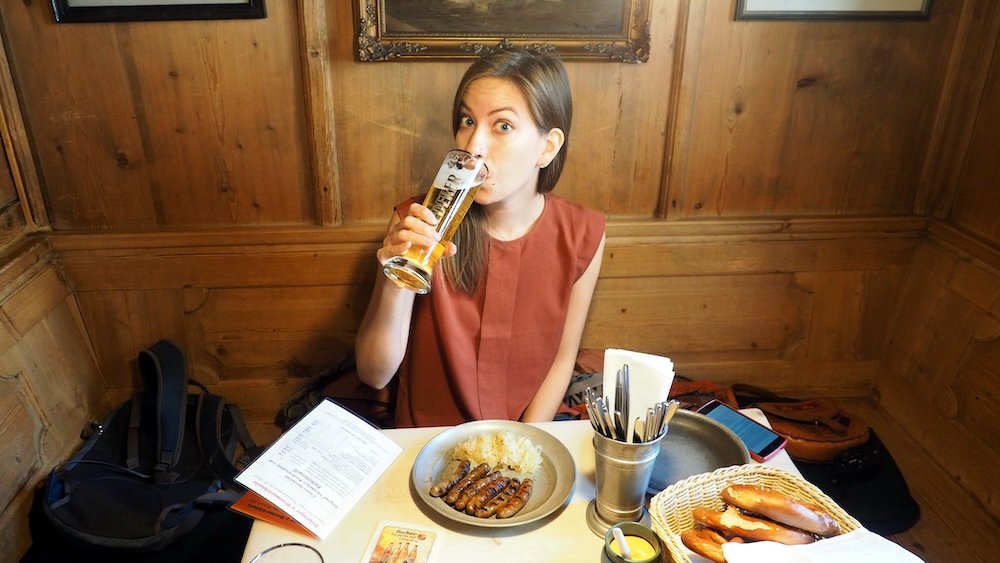
Yet planning your Nuremberg itinerary can feel overwhelming. Historic architecture abounds. Landmarks tell stories of both the Holy Roman Empire and the darker episodes of WWII. Figuring out which towers to climb, which museum to pick, or how much sausage is too much can leave you stumped. And then there’s the question of day trips: Where to go from here? This travel guide aims to solve those dilemmas.
Our Travel Video Guide on Samuel and Audrey YouTube Channel (Nomadic Samuel + That Backpacker hosting)
Families can appreciate the fairytale vibe. Couples might bask in romantic vistas from hilltop towers. Solo travelers can delve into museums or join beer tastings in a friendly environment.
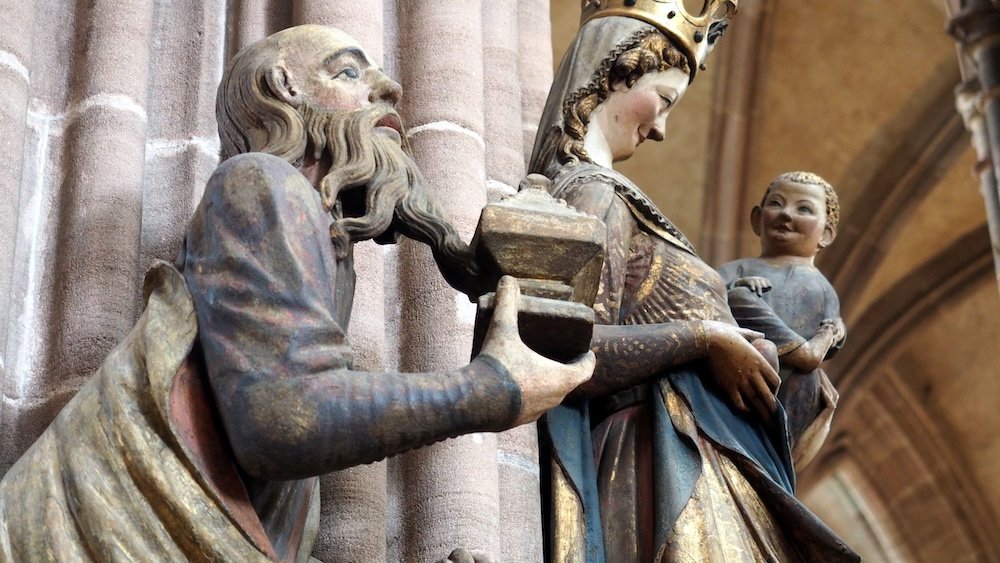
So let’s jump right in: from soaring church spires to underground tunnels, from iconic squares to mouthwatering gastronomic treats, here’s the best of this German gem.
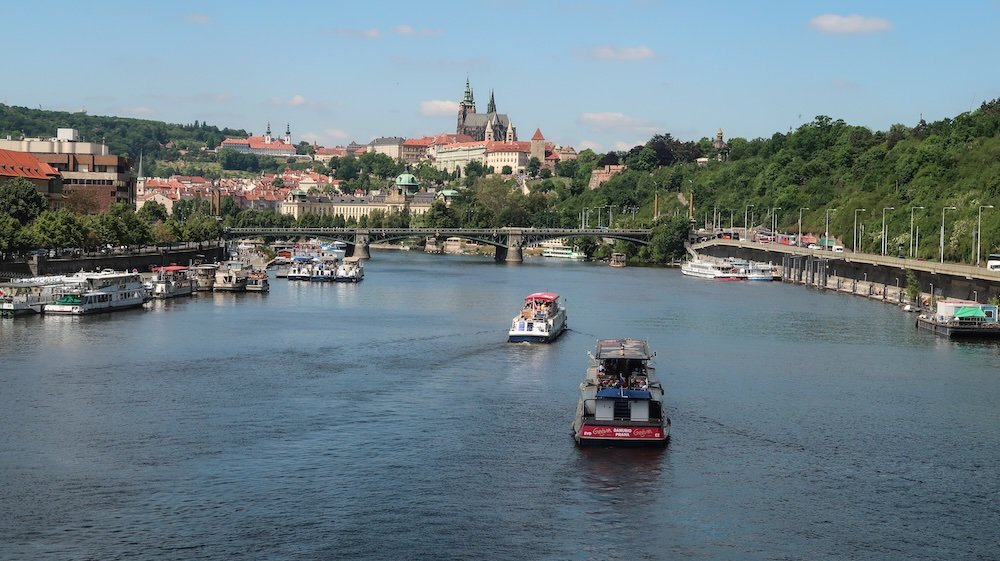
Top 10 Things To Do in Nuremberg, Germany For Visitors
Below are 10 recommended experiences capturing Nuremberg’s essence.
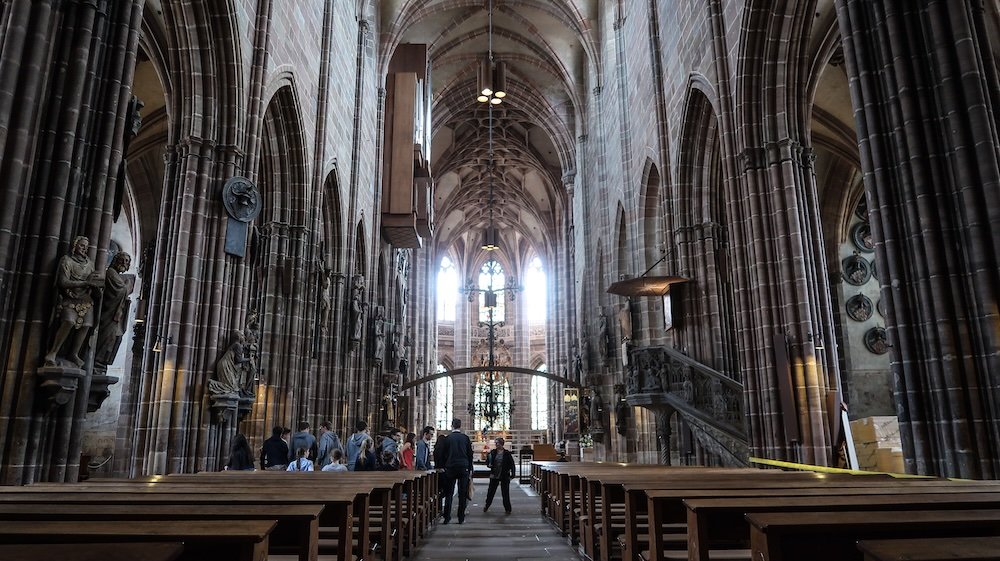
1) St. Lorenz Gothic Church (St. Lawrence Church in Nuremberg)
St. Lorenz is a towering Gothic masterpiece that marks the southern part of Nuremberg’s old town. Its spires pierce the sky, guarding centuries of religious art and cultural heritage. Inside, the vaulted ceilings soar overhead, and delicate stained glass windows cast colored light upon stone floors. Built in the 13th century, it withstood the ravages of war but underwent meticulous post-war restoration. Locals treasure it not just as a place of worship, but as a beloved emblem of the city’s resilience. Stepping inside invites quiet contemplation amid ornate carvings and centuries-old sculptures.
- Climb the church’s tower if open, for a unique vantage of the surrounding rooftops.
- Look out for special organ concerts that sometimes fill the nave with haunting chords.
- Be respectful if a service is in session—visitors are welcome, but keep voices low.
Tip: Check the official schedule—guided tours may provide deeper insight into St. Lorenz’s hidden corners and relics.
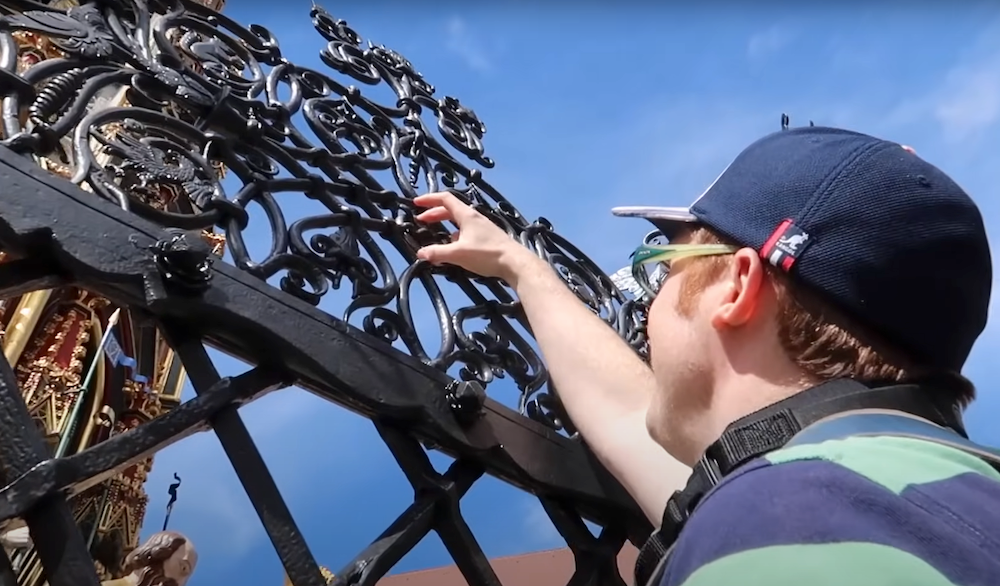
2) Rings for Good Luck (Nürnberg Schöner Brunnen)
The Schöner Brunnen (Beautiful Fountain) graces the Hauptmarkt with bright gold spires that dazzle against the backdrop of historic facades. Adorned with statues representing philosophers, church fathers, and historical figures, it stands as a tribute to the city’s medieval artistry. But the real charm? Two embedded rings on its ornate railing that, legend says, bring good fortune when spun. Visitors queue politely, each taking turns twisting them and hoping for a dash of luck. The fountain itself is a picturesque piece of Nuremberg’s cityscape, especially during the Christmas market months when lights and decorations ramp up the enchantment.
- Arrive early if you want an unobstructed photo; midday crowds can get thick.
- The ring color might fade from thousands of touches but remains visible for that essential spin.
- Street vendors nearby might share local tales or mention other superstitions.
Tip: Spin each ring slowly—some say one ring is for luck, the other for fertility or family wishes.
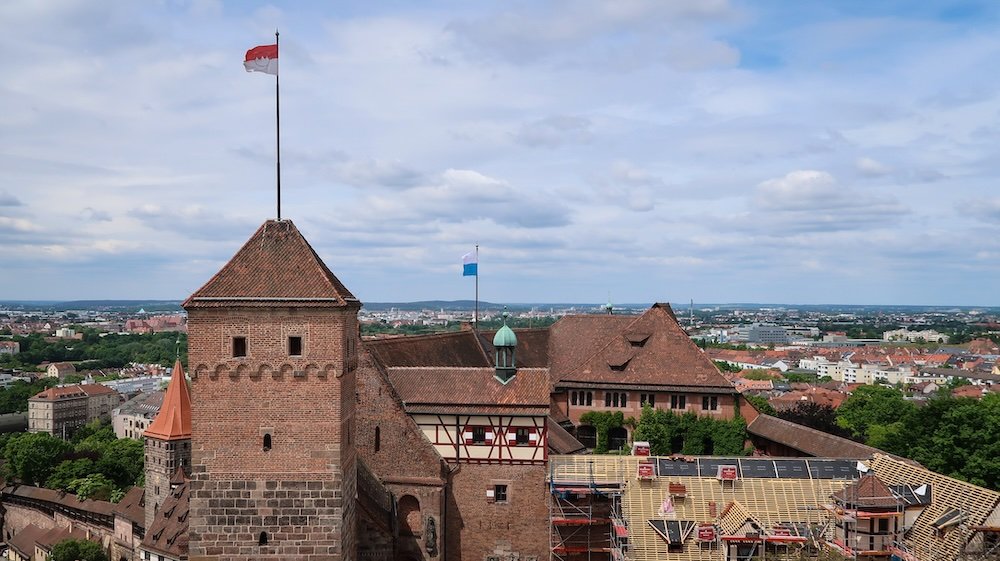
3) Nuremberg Castle (Nürnberger Burg)
Dominating the skyline, the Nuremberg Castle merges Romanesque and Gothic elements across an extensive compound. Once an imperial fortress, it hosted emperors of the Holy Roman Empire. Today, visitors stroll winding pathways, pass formidable walls, and ascend towers for panoramic vistas of red-roofed old town below. Inside, a small museum showcases weaponry, regal furnishings, and historical manuscripts. The courtyard often resonates with open-air events in summer, adding lively color to ancient stone. It’s a prime vantage for sunrise or sunset watchers craving scenic cityscapes.
- Check out the museum exhibits for insights into medieval life and castle architecture.
- Some sections require stable shoes—cobblestones can be slippery when wet.
- Families can enjoy exploring hidden nooks and crannies where kids imagine knights and princesses.
Tip: Visit early morning on weekdays if you want to avoid tourist buses and enjoy a quieter castle atmosphere.
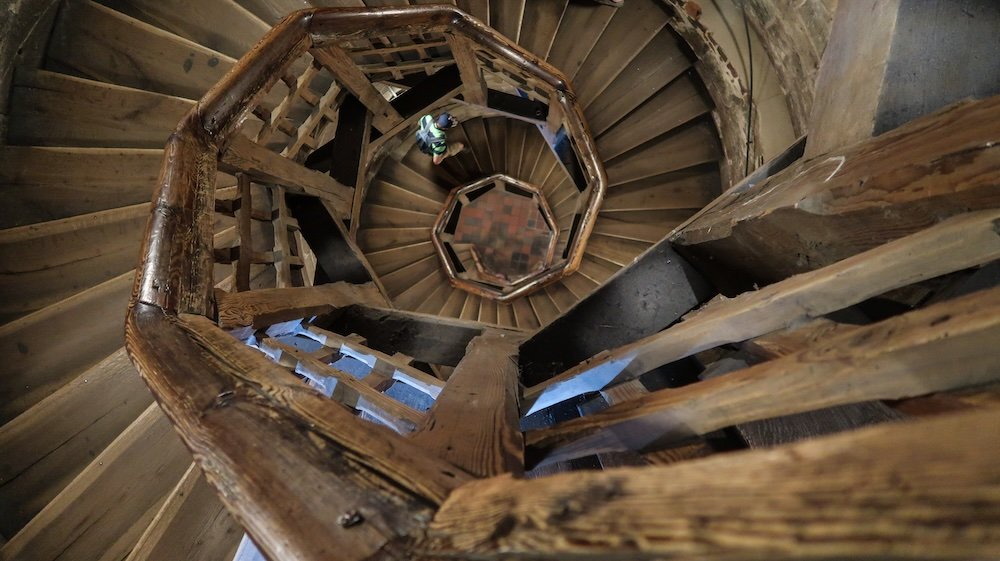
4) Sinwell Tower + Deep Well (Sinwellturm)
Within Nuremberg Castle stands Sinwell Tower, a sturdy round tower that once fortified the fortress from intruders. You can climb a steep spiral staircase to reach a small platform near the top. From here, an eagle’s-eye perspective unfolds—Nuremberg’s old town rolling outward in colorful waves. On the same grounds, don’t miss the Deep Well—an astonishing vertical shaft carved centuries ago to provide water during sieges. Looking down, you’ll see the well’s watery bottom far below, sometimes illuminated for dramatic effect. This pair of attractions underscores the city’s medieval resourcefulness and architectural might.
- Bring a camera for panoramic shots from Sinwell Tower’s viewpoint.
- Some guided tours demonstrate the well’s depth using a light or a small flame.
- Children fascinated by knights and castle defenses will love these features.
Tip: Check if the tower steps are a tight fit—if you’re prone to claustrophobia, brace yourself or try off-peak times.
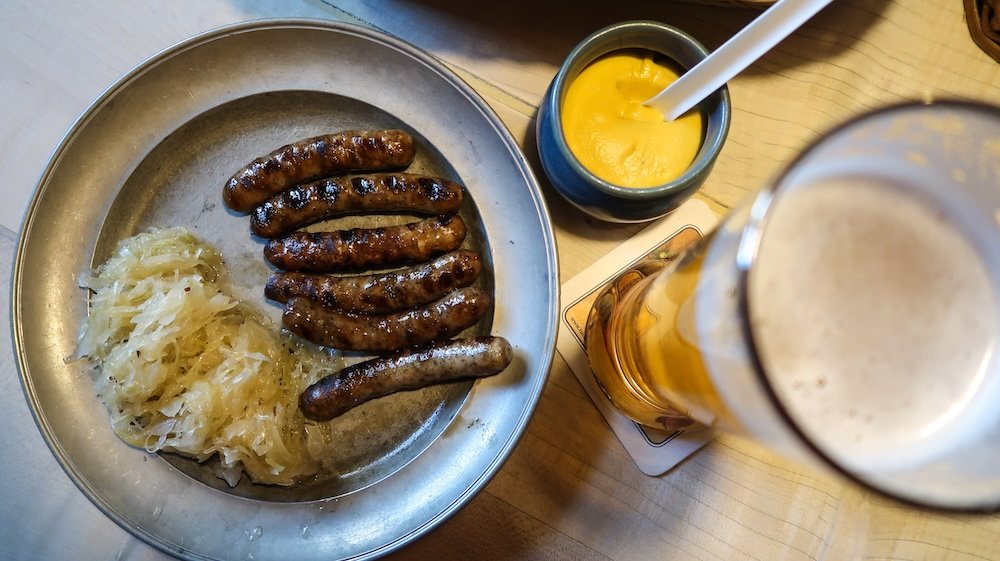
5) Nürnberger Rostbratwurst – Eating Nuremberg Sausage at Bratwursthäusle
Nuremberg’s mini sausages, known as Nürnberger Rostbratwürste, are an institution. Typically finger-sized and spiced with marjoram, they’re grilled over beechwood for that smoky, savory punch. Many consider them a gastronomic highlight, often served three in a roll or on a plate with sauerkraut or potato salad. Bratwursthäusle, near the main market square, is famed for sizzling them fresh in front of your eyes. Sitting down, you’ll inhale the aroma of sizzling meat and see plates stacked with these delicious links. In no time, you’ll appreciate why locals champion them as among Germany’s finest sausages.
- Pair with a cold local beer to amplify the flavor.
- Some places provide mustard or horseradish—but the pure taste is just as good.
- Check portion sizes; 6, 8, 10, or 12 sausages might all be options.
Tip: Ask for a side of fresh bread or pretzel to soak up the juices if you love carb companionship.
6) Underground Tunnels (Förderverein Nürnberger Felsengänge)
Beneath Nuremberg’s old town lies a network of ancient rock-cut cellars and passageways, collectively known as Felsengänge. Initially used for beer storage, they later served as WWII air raid shelters, adding layers of historical intrigue. Guided tours illuminate the subterranean corridors with tales of brewing traditions, wartime struggles, and local legends. The dim lights and cool temperature create an atmospheric journey—equal parts educational and slightly eerie. You’ll see secret corners, overshadowed arches, and echoes of centuries past. Emerging topside, you realize Nuremberg’s vibrant streets mask an entire hidden world beneath.
- Dress warmly—underground temps remain cool, even in summer.
- The ground can be uneven—wear sturdy shoes to avoid missteps.
- Photographs might be limited in certain areas to preserve the site.
Tip: Book in advance if you want an English-speaking tour, as timeslots can be limited.
7) Pretty Street (Weissgerbergasse)
Weissgerbergasse might just be Nuremberg’s prettiest lane. Lined with half-timbered houses in pastel colors, it feels straight out of a storybook. Cafés and boutique shops nestle in these centuries-old structures, inviting leisurely strolls. Flowers spill from window boxes, adding splashes of color along the wooden beams. Locals often come here for relaxed photo ops or a quiet coffee break on a sunny afternoon. You’ll realize how medieval architecture adapts seamlessly to modern life, retaining old-world charm in the heart of a bustling city.
- A short walk from the main square, so you can pop by easily.
- Many houses are private residences—respect signs if exploring doorways.
- Ideal for couples seeking romantic photos or travelers wanting a unique IG backdrop.
Tip: Try visiting midweek mornings if you want fewer pedestrians in the background of your pictures.
8) Albrecht Durer’s House (Albrecht-Dürer-Haus)
Renowned painter and printmaker Albrecht Dürer once lived in this distinctive timber-framed home at the foot of the castle. Today it stands as a museum, showcasing period furnishings, reproduction workshop spaces, and rotating displays about Dürer’s life. Each room breathes an air of Renaissance artistry, with glimpses into how he created famous engravings and altarpieces. The staff occasionally dresses in historical costume to offer interactive demonstrations, making the era come alive. You’ll gain insight into his influence on European art and how Nuremberg nurtured creativity. Stepping outside, the street view merges past and present—like slipping from Dürer’s century back to your own.
- Audio guides detail each chamber with curated anecdotes.
- The top floors might have narrower stairways—watch your head if you’re tall.
- Gift shop fans can pick up Dürer-inspired prints or postcards.
Tip: Allocate about an hour for a thorough visit, more if you enjoy reading every display in detail.
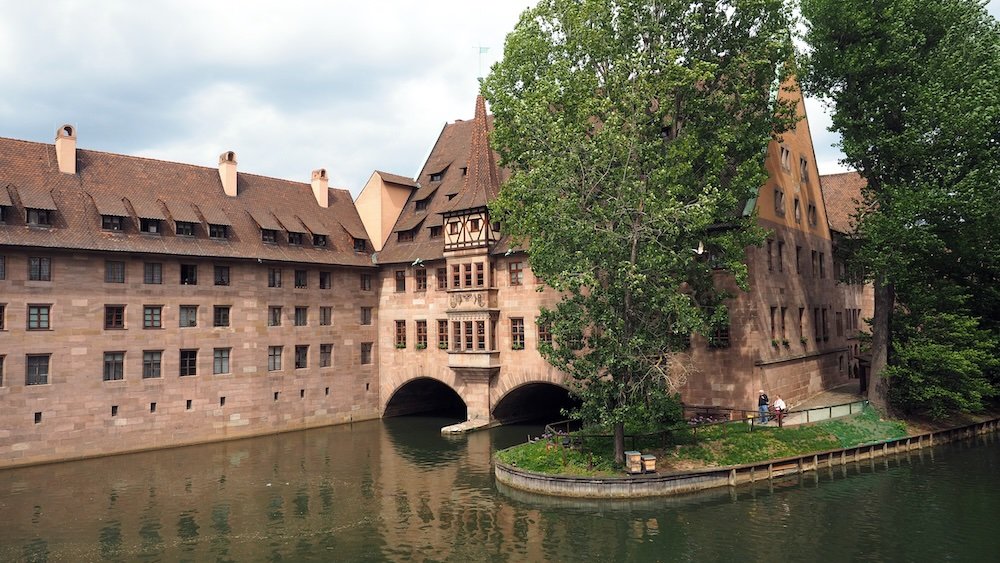
9) Bridge and Hospital (Heilig-Geist-Spital)
Strolling across the Heilig-Geist-Spital area along the Pegnitz River feels like stepping into a medieval painting. The half-timbered hospital building juts into the river, its arches reflecting on calm waters below. By day, the vantage is peaceful, with swans sometimes gliding by. By night, soft lights illuminate stone bridges, creating a dreamy glow. Built in the 14th century, it once served as a charitable hospital for the poor. Today, it’s an iconic photo stop that weaves architecture, history, and watery reflections into a scenic tapestry.
- Don’t rush—linger on the bridge for angles capturing the façade and arches.
- Surrounding squares sometimes host street performers or weekend markets.
- The interior is partially off-limits if events are running—check posted signs.
Tip: Return at sunset or after dark for a magical reflection—especially enchanting with overhead lanterns and the water’s gentle ripples.
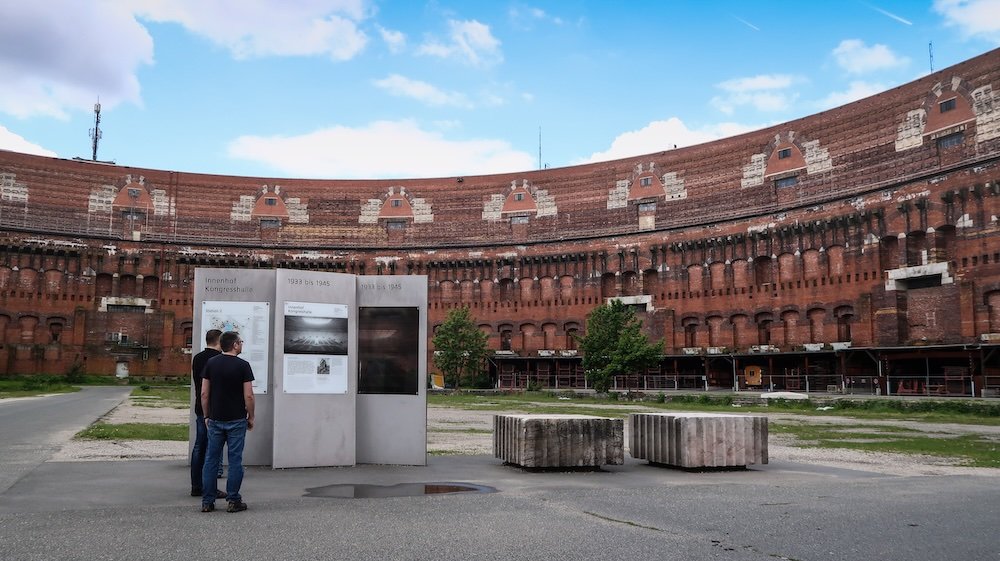
10) The Documentation Center Nazi Party Rallying Grounds (Dokumentationszentrum Reichsparteitagsgelände)
Nuremberg was a focal point for Nazi rallies, and this center grapples with that somber legacy. The museum, set in an unfinished Congress Hall, unpacks the propaganda machine, the rallies’ scale, and the psychological manipulation behind them. Exhibits blend photographs, film footage, and personal accounts. It’s not a cheerful stop, but it’s deeply educational and important for understanding Nuremberg’s 20th-century role. Many visitors leave reflective, having confronted the darker chapters of history. The architecture itself, looming and half-complete, echoes the hubris and tragedy of that era.
- Audio guides offer English narration, essential for non-German speakers.
- Plan at least two hours—the content is dense, and you’ll need time to absorb it.
- Outside, the rally grounds stretch wide, giving a sense of the rallies’ scale.
Tip: Prepare mentally—this museum is thorough and can feel heavy, so maybe follow with a lighter activity afterward.
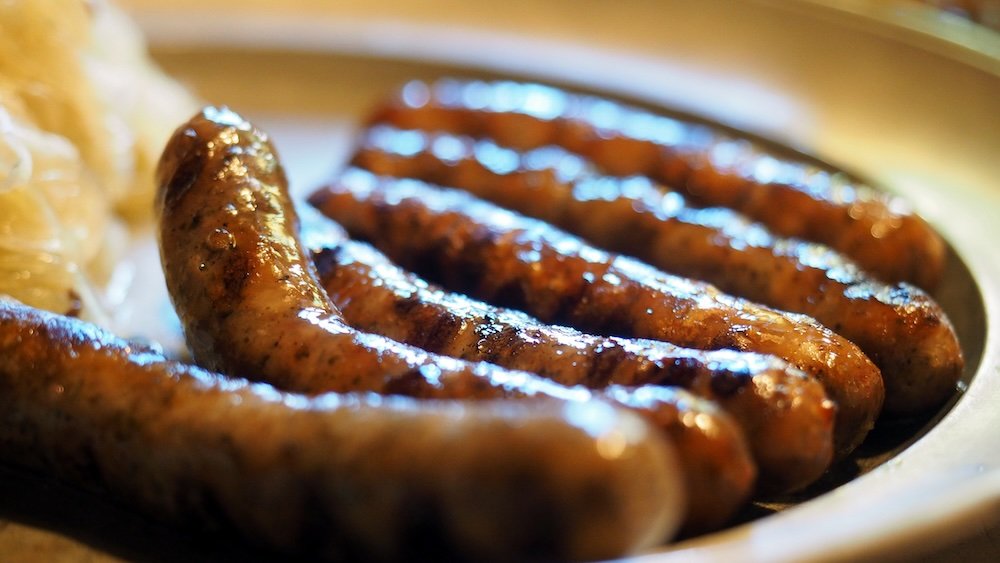
What To Eat and Drink in Nuremberg, Germany
Introduction: Franconian Flavors
Nuremberg’s cuisine mixes hearty Franconian staples with a dash of Bavarian influences. The city’s sausage culture is legendary, yet local pastries and beers also shine. Here’s a quick rundown of things to do for your taste buds, from street stalls to sit-down feasts.
Our Food Vlog From Nuremberg on Samuel and Audrey YouTube Channel (That Backpacker + Nomadic Samuel hosting)
Traditional Dishes to Try
- Nürnberger Rostbratwurst: Short, skinny sausages served in sets of six or more. Usually accompanied by sauerkraut or potato salad. They’re the city’s star dish and appear on nearly every menu.
- Schäufele: A roasted pork shoulder, crispy on the outside, tender within. Typically comes with potato dumplings or gravy.
- Lebkuchen: Soft gingerbread, often spiced with cinnamon and cloves, especially popular at Christmas.
Each dish reveals a piece of the city’s identity: smoky, comforting, and deeply rooted in tradition.
Breads, Pretzels, and Pastries
Bread culture is a German hallmark. In Nuremberg, you’ll find crusty rye loaves, crunchy pretzels, and sweet pastry twists. Morning markets might tempt you with fresh rolls slathered in butter or honey. If you want something sweet, look for jam-filled donuts or layered cream slices at local bakeries. Another highlight is Nussecke (nut corner), a rich, triangular pastry loaded with chopped nuts and chocolate drizzle.
Tip: Pair your chosen pastry with a steamy cappuccino or a hot cocoa for a sweet morning break.
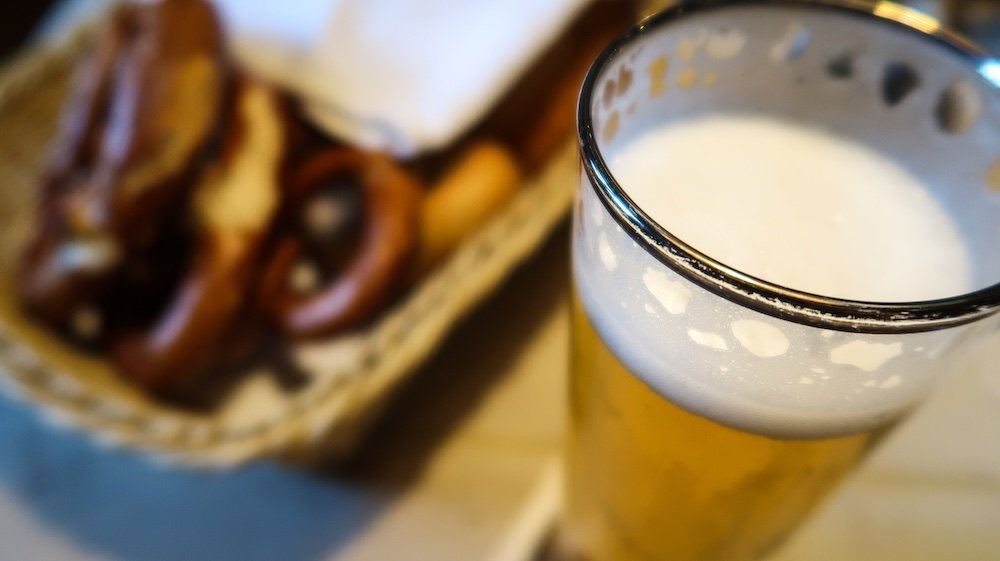
Beer and Beverages
Nuremberg sits in Franconia, a region boasting the highest brewery density in the world. Local brews vary from crisp lagers to malty dark beers. Bars often serve half-liter or full-liter mugs, perfect for those wanting a robust sip. If beer’s not your jam, sample local wines—Franconian white wines hold their own. Meanwhile, non-alcoholic options like Apfelschorle (apple juice mixed with sparkling water) offer a refreshing twist.
- Ask bartenders for seasonal or special brews if you crave variety.
- Try sampling smaller breweries in the region—some keep centuries-old recipes.
- If you see “Kellerbier” on the menu, it’s unfiltered and quite flavorful.
Tip: Sip in moderation—German beers can be potent, and you’ll want to maintain energy for further exploration.
Street Food & Night Snacks
Night markets or festival stands pop up throughout the year. You might stumble across smoky bratwurst stands open until late. Some stalls also sell roasted almonds, chestnuts, or other munchies that fill the air with sweet aromas. If you’re at a Christmas market, mulled wine (Glühwein) is a must. This spiced, warm beverage heats both your hands and your spirit.
Tip: Don’t skip the chance to chat with vendors—local owners can share tips on hidden dishes or lesser-known seasonal treats.
Vegetarian & Modern Twists
Though heavy on meat, Nuremberg’s evolving food scene now includes vegetarian or vegan spots. Many breweries or taverns also feature veggie versions of traditional plates. Whether it’s potato dumplings minus the gravy or a vegetarian spin on schäufele with grilled veggies, you won’t go hungry. Keep an open mind, as modern chefs experiment with local produce in new ways.
- Check local tourism websites or phone apps for up-to-date listings of veggie-friendly restaurants.
- Visit Markthalle or small produce markets for fresh fruit, smoothies, or salads.
- Even classic beer halls usually have cheese or bread-based plates.
Tip: Try a vegetarian spätzle (egg noodle) dish if you want a hearty, non-meat version of German comfort food.
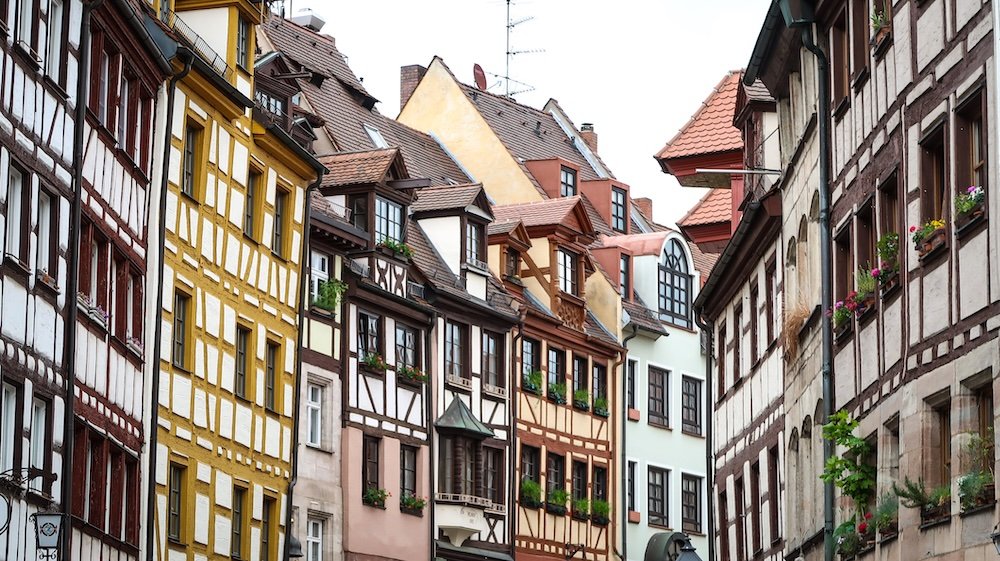
Tours For Visitors To Nuremberg, Germany
Why Consider a Guided Tour?
Nuremberg’s layered history deserves more than a quick glance. Tours let you unpack centuries of art, architecture, and major events that shaped Germany. They also lighten your planning load, offering curated routes or behind-the-scenes glimpses. Below are top picks if you crave structure or special insights.
Walking Tours
Walking tours remain a favorite, especially in the compact old town. Guides lead you through squares, pointing out hidden sculptures or sharing legends about the city’s fortifications. A standard route might include the Hauptmarkt, Schöner Brunnen, St. Sebald Church, and Nuremberg Castle vantage points. These tours typically last two hours, providing a quick orientation plus intriguing anecdotes. Some even delve into WWII or medieval trade stories. Perfect if you prefer an up-close approach with constant city views.
- Look for small-group tours for a friendlier dynamic.
- Wear comfy shoes—cobblestones test your soles.
- Ask about weather contingencies—tours might proceed in light rain, so come prepared.
Tip: Book your spot early if traveling in high season to ensure you snag a tour in your desired language.
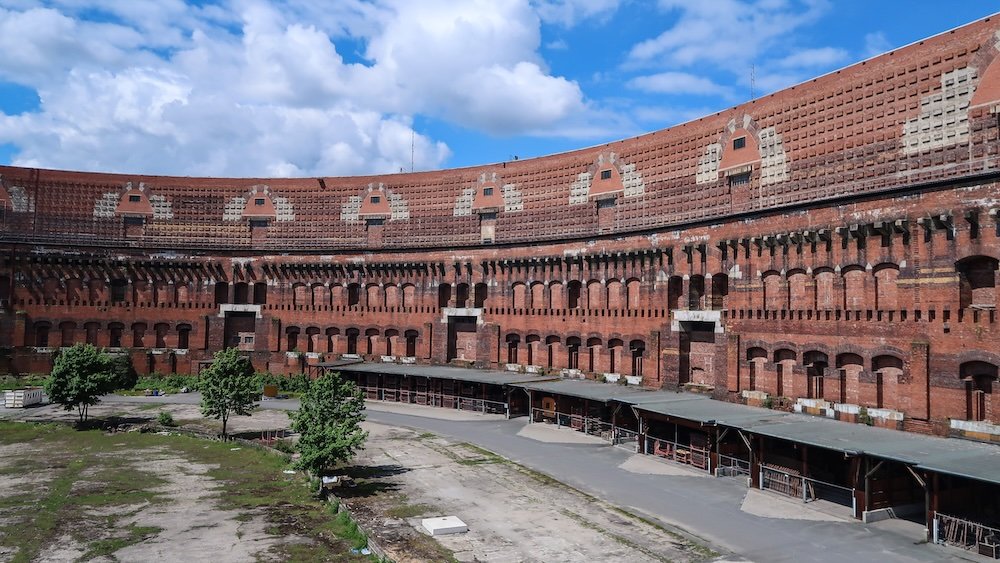
WWII / Nazi Rally Grounds Tours
Given Nuremberg’s significance in Nazi rallies and the postwar trials, specialized tours focus on that era. You’ll traverse the Documentation Center, the Congress Hall remains, and the vast rally grounds. Guides share context on propaganda, architectural ambitions, and the chilling scale of events. Some tours link these sites with the Palace of Justice, where the Nuremberg Trials occurred. Intense but crucial for deeper historical understanding. Good for history buffs who want a thorough narrative.
- Some tours might include the courthouse’s trial rooms if scheduling allows.
- Bring water and comfortable walking attire; the rally grounds are expansive.
- Reflect afterward—these sobering insights can weigh heavily on your mood.
Tip: Combine with an uplifting or cultural activity after, balancing the emotional load.
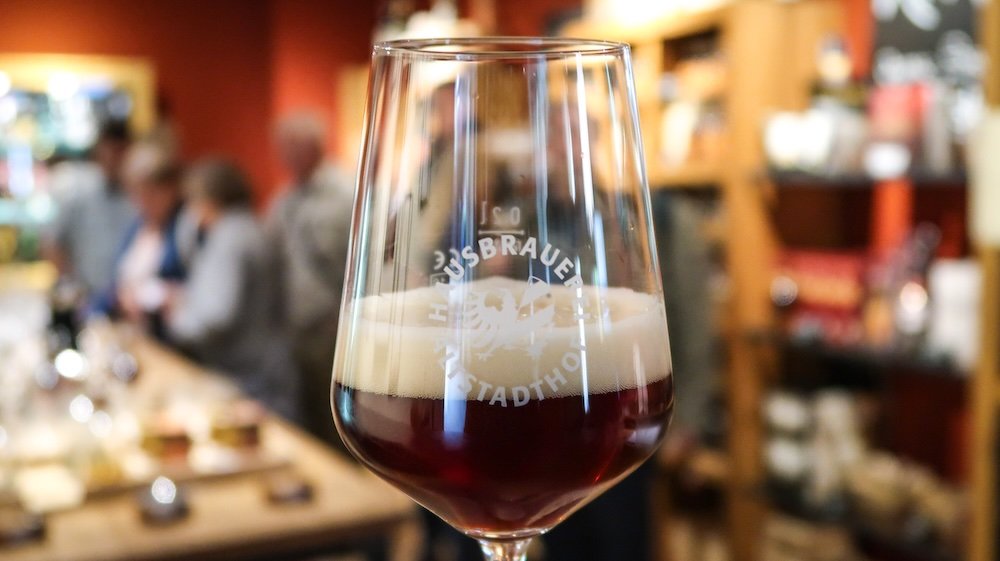
Food & Drink Tours
For gastronomes, a food tour weaving through Nuremberg’s markets, sausage stands, and breweries can be a highlight. Local experts explain bratwurst-making secrets or Lebkuchen origins. You might visit hidden sausage kitchens, sample craft beers, or nibble fresh pretzels. Some tours finish with a hearty meal or sweet treat tasting. If your ideal day includes munching your way through city lanes, this hits the spot.
- Confirm dietary needs—vegetarian or gluten-free requests vary by operator.
- Tours often sample small bites at multiple stops, so pace yourself.
- Photo ops galore—every snack stall brims with old-world charm.
Tip: Check group size—smaller groups mean easier crowd management at cramped eateries.
Castle & Old Town Segway/Bike Tours
For a more dynamic approach, consider biking or riding a Segway around the city’s outer walls and scenic park edges. Rolling across the Pegnitz River or up to the castle walls by Segway can be exhilarating. Guides reveal vantage points you might miss on foot. Biking tours typically run two to three hours, covering a surprising stretch. The playful nature of these vehicles also keeps the mood light.
- Some tours require a quick training session for Segway handling.
- Bike routes are typically beginner-friendly—Nuremberg’s inclines are moderate.
- Check if helmets or safety gear are included or if you must bring your own.
Tip: Assess your comfort with traffic. While Nuremberg is bike-friendly, city roads can still challenge novices.
Seasonal & Custom Tours
Christmas transforms Nuremberg with its famous Christkindlesmarkt. Seasonal tours highlight the market’s origins, local Glühwein stands, and unique crafts. Alternatively, private tours can tailor stops to your interests—art-lovers, architecture geeks, or street-food aficionados. This approach suits those craving flexibility or those returning for a deeper look. Expect slightly higher costs, but the personal immersion often justifies it.
- Book Christmas market tours well in advance—December sees huge crowds.
- Private tours let you linger at your favorite spot without time pressure.
- Some specialized operators offer photography tours with insider angles or nighttime roams.
Tip: Compare local agencies or official tourism office listings to find a guide style that matches your vibe.
Our Travel Vlog From Nuremberg on Samuel and Audrey YouTube Channel (Hosted by That Backpacker and Nomadic Samuel)
Nuremberg Accommodations Guide: Hotels, Guesthouses and Hostels
Introduction: Where to Stay
Nuremberg offers lodging options for nearly every budget and style. From medieval-flavored guesthouses nestled in the old town to sleek modern hotels near the main station, you’ll find things to do right outside your door. Here’s a quick breakdown.
Old Town (Altstadt) Hotels
Staying in the Altstadt submerges you in centuries of history. Cobblestone streets, half-timbered facades, and quick access to main landmarks define the experience. You can wander out your door to see the Hauptmarkt, Schöner Brunnen, or local cafés within minutes. Night ambiance is relaxed, though certain squares may get lively with pubs. Expect slightly higher rates due to location convenience. But waking up to the charm of old stone walls can be priceless.
- Some buildings lack elevators—check if you have heavy luggage or mobility concerns.
- Hotel rooms might be smaller or have unique layouts if carved from historic structures.
- Book early, especially during events like the Christmas Market or big trade fairs.
Tip: Look for “Altstadt views” in room descriptions—some windows reveal a postcard vista.
Around the Main Station (Hauptbahnhof)
If you prefer easy train or bus connections, staying near Nuremberg Hauptbahnhof works wonders. Modern hotels cluster here, often featuring business-style amenities. Late-night convenience stores or quick eateries remain open, suiting travelers with odd arrival times. Streets can be busier but also less quaint compared to the old town. This zone suits those planning day trips or needing minimal commute stress. You can still reach the city center on foot in about 10-15 minutes.
- Some budget chains operate near the station, good for cost-conscious travelers.
- Double-check noise levels—train traffic or city bustle can be audible.
- If you want a short walk to public transport, this location is prime.
Tip: Request higher floors if you want quiet from street clamor—sound travels less up there.
Mid-Range & Boutique Spots
In neighborhoods just outside the old town ring, you’ll find cozy guesthouses or boutique hotels. They blend modern design with a local vibe, sometimes run by families. Quieter nights and slightly cheaper rates than central squares. You’ll walk a bit more or hop a tram, but the payoff is a calmer environment. Perfect if you love a small-hotel ambiance with personal touches like homemade breakfasts.
- Some spots have only a handful of rooms—reserve early for popular weekends.
- Ask about parking if you’re renting a car.
- Chat with owners—they often share insider dining or sightseeing tips.
Tip: Check reviews for “boutique” or “design” hotels if you value unique decor or a curated ambiance.
Hostels & Budget Lodging
Backpackers or budget-savvy folks can pick from a handful of hostels in or near downtown. Dorm beds, shared kitchens, and communal lounges characterize these spots. You’ll meet fellow travelers, trade tips, maybe share group dinners. Proximity to the old town can vary—some hostels sit closer to station areas. Great if you’re under tight finances or want that social vibe.
- Some hostels may impose curfews or quiet hours—check details if nightlife is on your list.
- Lockers are typically provided—bring a padlock for safekeeping.
- Linens and towels might be extra, though many places include them now.
Tip: Skim the reviews for cleanliness or noise levels. Each hostel can differ drastically in atmosphere.
Luxury & Upscale Choices
For travelers seeking top-tier amenities, Nuremberg features a few high-end hotels with spa facilities, fine dining, and plush bedding. Some are modern towers with panoramic city views, others historic conversions with old-world charm. Expect bigger rooms, possibly with castle or river vistas. Perfect for those celebrating special occasions or craving indulgence. Though costlier, these hotels often throw in extras like airport shuttles or gourmet breakfasts.
- Check for on-site restaurants—some serve up stellar Franconian dishes.
- If you have a loyalty program with big hotel chains, see if they have a property here.
- Additional perks might include gym access, pool, or professional concierge services.
Tip: Snag weekend or off-season deals—business travelers vanish, and luxury rates sometimes drop.
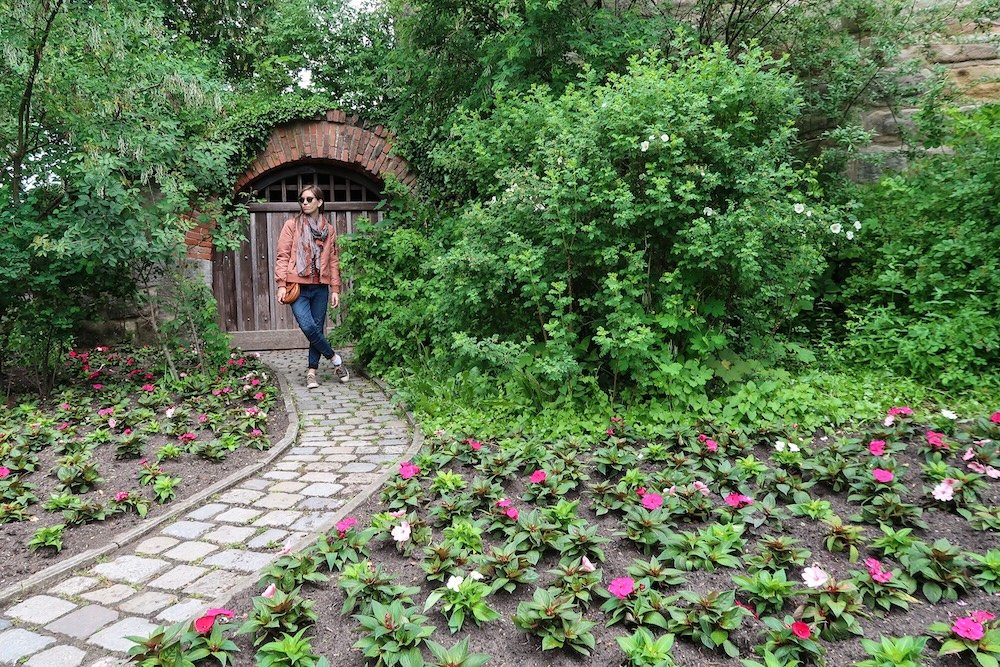
Day Trips From Nuremberg, Germany
Why Day Trips?
Nuremberg sits in a prime spot within Franconia, making short excursions both easy and rewarding. From fairytale towns to scenic beer trails, you’ll find things to do beyond city walls. Here are top day trip ideas if you want to expand your horizon.
1) Bamberg
Bamberg, a UNESCO-listed town, oozes medieval charm on seven hills. Its Old Town Hall, perched over a river, begs for photos. You’ll weave through narrow alleys, discovering half-timbered houses and baroque churches. The local brew scene is legendary—smoked beer (Rauchbier) is a must-try. Bamberg’s vibe is laid-back, perfect for strolling or lingering in a riverside café. Trains from Nuremberg typically take under an hour, making it an easy, scenic day out.
- The imperial cathedral and surrounding gardens are great vantage points.
- Try “Bamberger Hörnla,” a local pastry shaped like a horn.
- Many breweries run centuries-old traditions—tour one if time allows.
Tip: Book an early train to maximize your day—Bamberg can easily fill a full agenda if you love architecture and beer.
2) Rothenburg ob der Tauber
Rothenburg ob der Tauber is the stuff of fairytales, with perfectly preserved medieval walls. Stroll the cobbled lanes, each lined with pastel houses boasting flower-filled window boxes. The town’s scenic vantage from the walls is postcard perfection. Don’t miss the Christmas Museum if you love holiday magic year-round. Shops sell souvenirs from ornaments to local pastries like Schneeballen. Though about 1.5–2 hours away, it’s a day trip that immerses you in Germany’s storybook side.
- Climbing the Town Hall tower rewards you with wide panoramas of red rooftops.
- Many visitors sample the famed Schneeballen pastry (fried dough dusted with sugar).
- Rothenburg can be crowded midday, so plan to arrive early or stay late.
Tip: Explore side streets beyond the main square—some quiet corners hold hidden fountains or small art galleries.
3) Würzburg
Würzburg dazzles with baroque flair and vineyards. Its UNESCO-listed Residence Palace wows visitors with frescoed ceilings and lavish interiors. Outside, the Marienberg Fortress overlooks the Main River, offering scenic vantage points. An old bridge lined with statues sets a romantic tone at sunset. Wine culture thrives here—sampling local Franconian wines is a highlight. A direct train from Nuremberg gets you there in about an hour.
- The Residence’s Court Garden bursts with floral displays—don’t skip it if you love horticulture.
- Cross Alte Mainbrücke for the best fortress photo ops.
- Try a “Bocksbeutel” bottle of local wine—iconic shape, rich taste.
Tip: Check if fortress tours require prior booking, especially in peak tourism months.
4) Franconian Switzerland (Fränkische Schweiz)
This region, nicknamed Franconian Switzerland, boasts rolling hills, limestone cliffs, and hidden caves. It’s a playground for hikers, rock climbers, and castle enthusiasts. Quaint towns dot the landscape, each with a microbrewery or two. If you crave fresh air, consider renting a car or joining a local tour. Scenic routes lead you through valleys, with stops for hearty Franconian meals. It’s a nature-infused break from Nuremberg’s urban setting.
- Explore Devil’s Cave (Teufelshöhle) near Pottenstein for stalactite wonders.
- Many villages host summer festivals with music and regional beer.
- Castle ruins or fully preserved fortresses perch on hilltops, each with its own legend.
Tip: Pack sturdy shoes—trails vary in difficulty, and rocky pathways demand good grip.
5) Regensburg
Though officially in Bavaria, Regensburg is reachable within about an hour by train. Its medieval center and stone bridge over the Danube exude old-world charm. The city bustles with student life, so a youthful vibe permeates cafes and bars. The towering Gothic cathedral anchors the skyline. Side streets hide Roman ruins and pastel facades. A day wandering the promenade, sampling local beer, or visiting the Thurn and Taxis Palace can be refreshingly scenic.
Bullet Points
- The Stone Bridge offers panoramic views of the old town across the Danube.
- The historical sausage kitchen next to the bridge is rumored to be centuries old.
- Summer nights see open-air concerts or lively beer gardens near the water.
Tip: Join a short boat ride along the Danube if time allows—views from the river reframe Regensburg’s architecture.
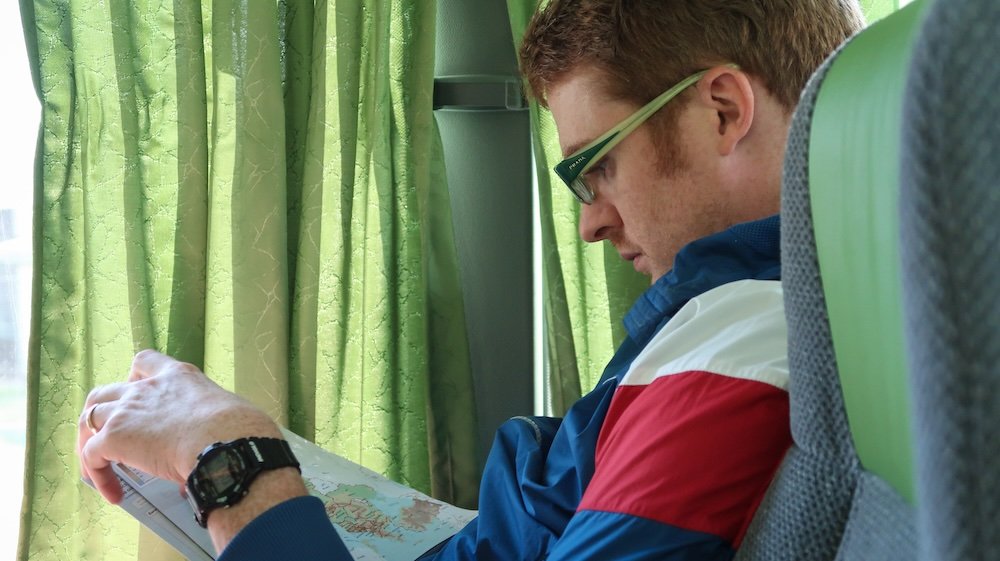
Nuremberg Transportation Guide
Overview: Get Around Easily
Nuremberg’s compact center plus a well-connected public transit system simplify your things to do itinerary. Here’s how to navigate trains, trams, and buses with minimal fuss, ensuring you see every corner.
Nuremberg Card & Public Transit
The Nürnberg Card is a boon for travelers planning multiple museum visits and unlimited rides on trams, buses, and the U-Bahn. Valid for two days, it often covers entry to major attractions like the Germanic National Museum or the Kaiserburg. If you’re a museum buff, the card pays for itself quickly. Alternatively, single or day tickets exist for local transport. Validate them on your first ride—inspectors do check occasionally.
- Purchase the card at tourist info centers or many hotels.
- Keep it in your wallet for easy scanning or showing.
- Family versions or group deals might be available—ask staff.
Tip: Assess how many sights you’ll see in 48 hours—if it’s only one or two, maybe skip the pass.
U-Bahn & S-Bahn
The U-Bahn (subway) and S-Bahn (urban rail) lines web across the city and surrounding region. The U1, U2, and U3 lines pass major spots like the central station or key squares. The S-Bahn extends outward, useful for suburban or day-trip destinations near Nuremberg. Trains are generally punctual, though rush hour can crowd certain carriages. Station signs appear in German, but routes are color-coded, simplifying navigation.
- Check overhead boards for next train arrivals—common in main stations.
- Some station escalators might run in one direction only, so watch signage.
- Trains typically run from early morning until around midnight.
Tip: Download a city transport app for real-time updates—handy if unexpected delays strike.
Our Transportation Vlog on Samuel and Audrey YouTube Channel: That Backpacker + Nomadic Samuel as hosts
Trams & Buses
Trams remain a scenic way to traverse the city center’s perimeter. Many lines pass by medieval walls, giving you a rolling view of Nuremberg’s old-meets-new skyline. Buses fill in the gaps—particularly if you need that last-mile connection to a lesser-known district. Drivers rarely speak extensive English, but a friendly approach or showing your destination address helps. If you only travel occasionally in a day, single or short-trip tickets might suffice.
- Most bus stops display a route list—timing is approximate but usually accurate.
- Trams are wheelchair-accessible in designated cars.
- Some lines reduce frequency late at night, so plan accordingly.
Tip: Confirm the final destination on the bus or tram’s front display—avoid heading the wrong direction.
Taxis & Ride-Sharing
Taxis cluster around train stations, major squares, or can be booked by phone. Meters are standard, though rides cost more than public transit. If you’re hauling luggage or out after midnight, a taxi might be worth it. Ride-sharing apps (like Uber) operate in limited capacity—local laws can be restrictive. Always check if the driver’s license is displayed, ensuring an official taxi if you prefer that route.
- Airport runs typically take 15–20 minutes from the city center.
- Credit card acceptance varies—ask before hopping in.
- Tipping is minimal in Germany—round up or add a euro or two.
Tip: Avoid peak trade fair times if possible—traffic surges, and cabs become scarce.
Biking & Walking
Nuremberg’s old town is quite walkable, with scenic lanes and pedestrian-friendly squares. For bigger distances, renting a bike can be fun—some shops or hotels offer rentals. The city invests in bike lanes, though certain cobblestone paths can jostle your wheels. Helmets aren’t mandatory but recommended for safety. In warm months, cycling along the river or between parks is a delightful change from typical tourist routes.
- Lock your bike well—thefts can happen.
- Watch out for tram tracks or uneven pavement—wheels can get stuck.
- Pedestrian zones might restrict bike riding during busy hours.
Tip: Plot your route in advance if biking—Google Maps or city apps highlight dedicated cycle paths.
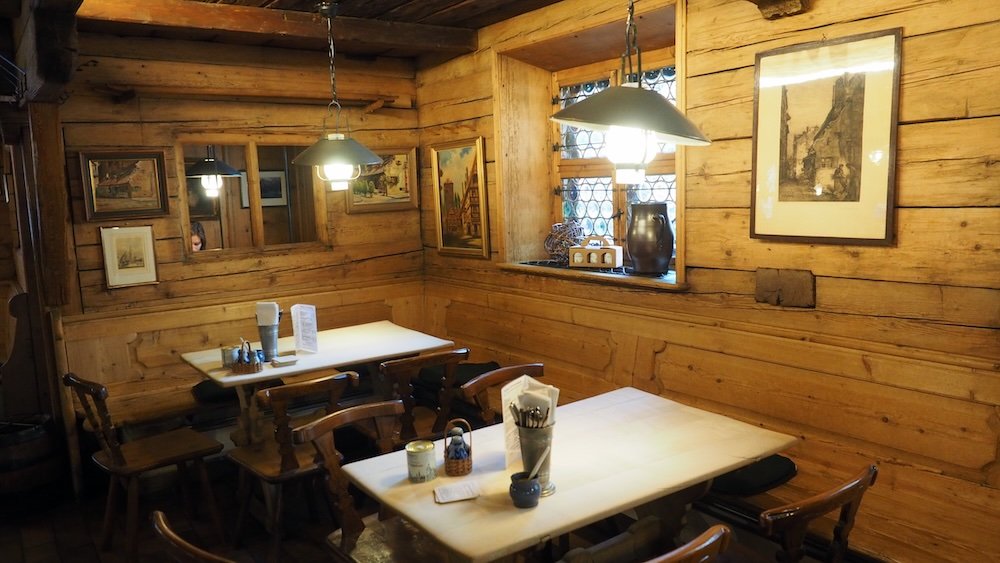
Nuremberg Travel Guide: Final Thoughts
Nuremberg offers numerous things to do that satisfy curious travelers from all angles—history buffs, art lovers, and foodies included. Each day might blend cathedral visits with bratwurst bites, or castle climbs with quiet strolls along the Pegnitz River.
You’ll discover traces of the Holy Roman Empire set against the aftermath of WWII, all within the same half-mile radius. That contrast helps you sense Nuremberg’s resilience. In one corner, the Documentation Center echoes the city’s darkest chapters. Yet a short walk away, vibrant squares hum with life, children chase pigeons, and buskers strum cheerful tunes.
Food and drink also reflect this layered identity. Traditional sausages or Lebkuchen gingerbread might feel like they come from a storybook. Tuck into hearty Franconian dinners or sample craft beers in reimagined taverns. Meanwhile, day trips expand your perspective—Bamberg’s smoky beer halls or Rothenburg’s storybook lanes deepen your sense of Franconian heritage.
Plan your lodging near the old town if ambiance matters, or near the station for convenience. Embrace the public transport—U-Bahn, S-Bahn, or trams—to hop from cathedrals to breweries with minimal fuss. And if you have extra days, head out into the region’s scenic countryside or smaller towns to enrich your stay.
